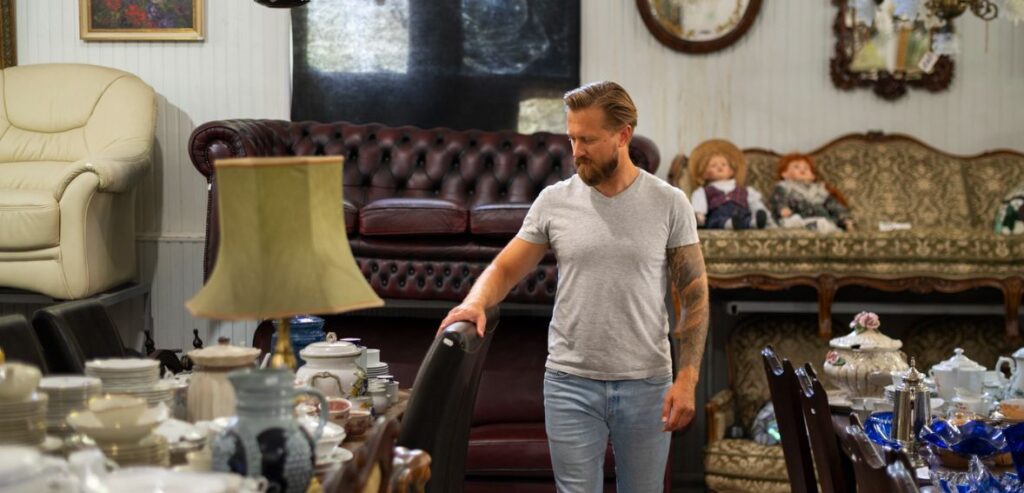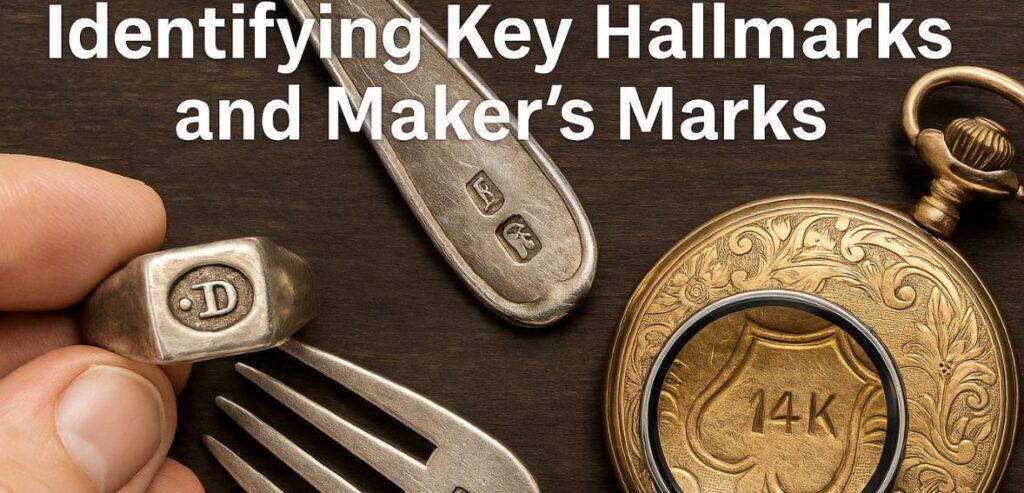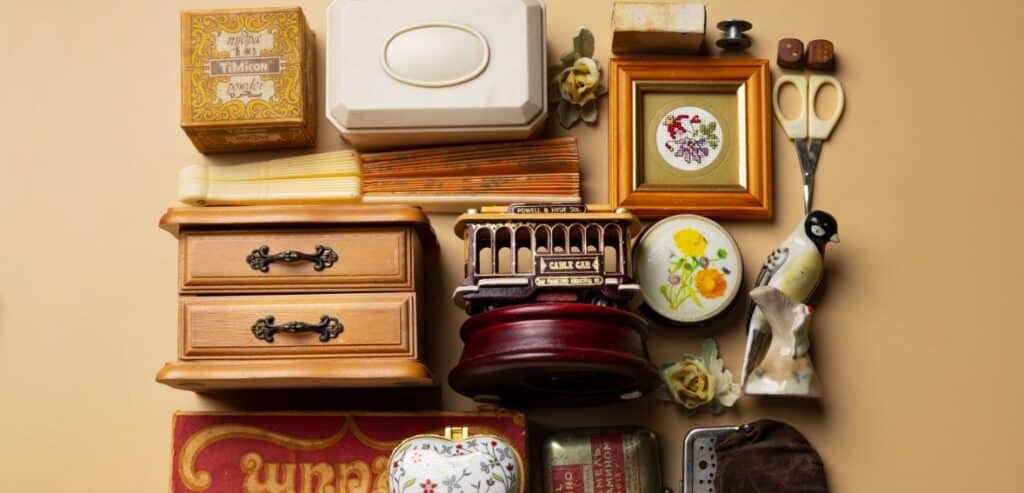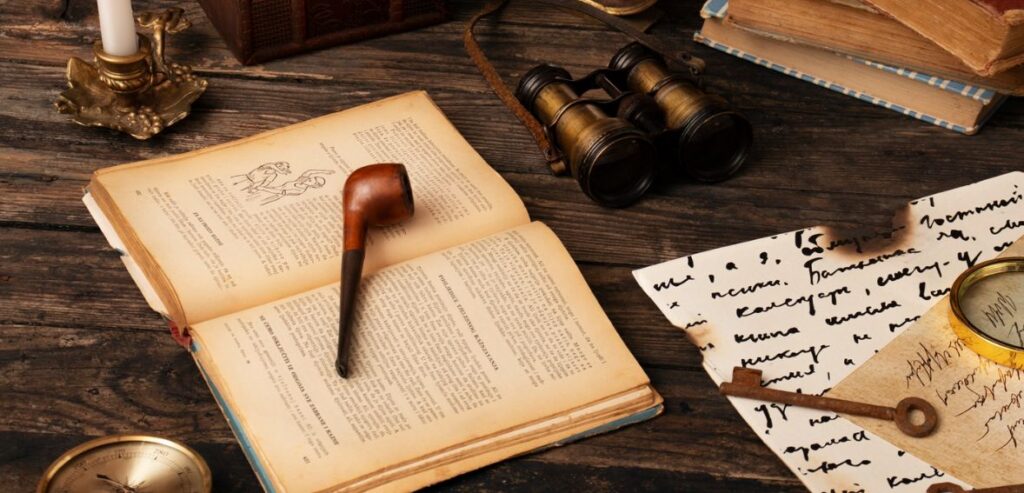
By Chelsea Wood June 30, 2025
Figuring out what your vintage treasures are really worth is a mix of detective work, gut instinct, and knowing what collectors care about right now. Knowing what makes something valuable—and what doesn’t—is essential, regardless of whether you’ve discovered oddball items at a local flea market or inherited dusty heirlooms from a grandparent’s attic. A little detective work, curiosity, and knowing what buyers value right now go a long way—this isn’t just about nostalgia. Once you learn how pros look at pieces, you’ll shop and sell with confidence and insight.
This article will guide you through the entire process. Without using unduly technical jargon, you will learn how to assess authenticity and age, identify important makers and hallmarks, comprehend condition and rarity, assess demand and trends, and consult trustworthy sources. By the end, you’ll have the ability to discern whether an item is sentimental clutter or a hidden gem, which will empower you to make wise choices whether you’re buying, selling, or just building a legendary collection.
Recognizing Age and Authenticity

The first step in appreciating an item is to know how old it is. Antiques are generally regarded as being a century or older, whereas vintage usually refers to items that are at least twenty years old. However, value isn’t assured by age alone. Run your fingers along the edges, peek under the finish, and spot small quirks that only real age can create—these signs help you root out fakes and spot the genuine articles. These are the clues that help you figure out if it’s the real deal.
For example, a vintage wooden dresser may have hand-cut dovetail joints, which are typical of furniture from the early 20th century but not found in contemporary mass production. In a similar vein, ceramics may have maker’s marks, inconsistent glazing, or other flaws that, although they may be viewed as defects by some buyers, actually indicate genuine, older craftsmanship.
UV light may occasionally show overpainting or hidden repairs. Over decades, metal objects may naturally oxidize or tarnish. Each of these traits contributes to the story by demonstrating that the item has endured, which frequently increases its worth. It takes practice to learn to recognize these subtle clues, but even tiny hints can change your perception of the provenance and value of an item.
Identifying Key Hallmarks and Maker’s Marks

Stamps, engravings, labels, or etched symbols that identify the maker or place of origin are common signatures found on valuable objects. In the realm of silverware, hallmarks can serve as indicators of manufacturer, country of origin, and purity. Labels from workshops or cabinetmakers, such as Stickley or the Fowler Brothers, may be found on furniture. Tags from niche designers or brands unique to a given era are frequently found in vintage clothing.
Decoding hallmarks takes time, but it pays off. A quick web search, a flip through a specialty guide, or a post in a collector group can often tell you exactly who made that piece—and why it matters. Porcelain from Meissen, Germany, for instance, may have a delicate, entwined China mark, which is a sign of quality and collector demand. Several hundred dollars can be added to flatware with a subtle, tiny Gorham stamp. Over time, you’ll build a mental library of the names and brands that carry weight in different collecting circles.
Assessing Condition and Wear
Condition often makes or breaks an item’s value. A table with a soft patina might be more charming than a showroom-perfect copy. It’s about knowing which blemishes tell a story—and which ones drag down the price. The imperfections of a century-old barn-wood table with authentic patina may make it more valuable than a perfectly preserved 1920s textile. Learn to differentiate between damage and acceptable wear as you evaluate condition. Collectors may expect—even welcome—surface scratches on paintings, minor abrasions on fabrics, or an old tool with a worn handle. Water stains, missing parts, broken joints, and broken pieces can all significantly reduce value.
Always take note of both the advantages and disadvantages. Original elements of a thorough assessment will include: Were the linings of the fabric still in place? Is a lid tight? Was the lower corner signed by the artist? Being truthful when identifying problems enables you to decide whether restoration is worthwhile or if an item is only suitable for parts and repair.
Considering Rarity and Demand

Value is fueled by rarity, but only when demand is balanced. A typical depression-era ashtray probably won’t fetch thousands of dollars, but a unique hand-thrown ceramic vase from a well-known mid-century studio can. Examine production figures, surviving examples, and market visibility to comprehend rarity. How frequently do comparable products show up in online sales or auctions? Have they appeared in books, blogs, or exhibitions?
There is more fluctuation in demand. Styles change over time; for example, Art Deco jewelry may suddenly become very popular, or sustainability trends may increase interest in natural fiber textiles. Things that were previously overlooked can be elevated by modern sensibilities.
For this reason, keeping up with auctions, catalogs, and trend reports is beneficial. Prices often increase, sometimes quickly, if collectors and stylists are showcasing a particular kind of item. Value is not assured by rarity alone, but when trend and scarcity collide, a sweet spot is discovered that can be converted into actual market value.
Comparing Market Dynamics and Sales Channels

After gathering information about age, condition, and rarity, you must compare the prices of comparable items. Real-world pricing information—what people are actually paying—is provided by websites such as Etsy, 1stDibs, eBay, and Live Auctioneers. Tip: the ‘listed’ price isn’t always reality. Check what people actually paid—there’s often a big gap between what sellers want and what buyers are willing to pay. Price trends and seasonal variations can also be found in the catalogs of local antique fairs and auction houses; for example, a mid-century Danish teak chair might sell for more at a design fair than in a small antique shop.
Whether you’re trying to sell art or collectible décor, the platform you choose can significantly influence exposure and final pricing. Don’t forget where you are. In Boston or Chicago, a Victorian dining set might be popular, but in a more isolated location, it might not be as popular. Consider your target market, visibility, and shipping costs if you plan to sell. Although the market is dynamic, comparing platforms and venues gives you a realistic idea of what consumers value and are willing to pay.
The Value of Expertise: Appraisers and Specialists
An amateur can pick up a lot of knowledge, but sometimes expert advice is priceless. Expert appraisals can be given by certified appraisers, specialized dealers, and reliable auction house consultants, particularly for expensive or complicated items. They are aware of subtleties such as typos in maker’s marks, particular restoration methods, and faint indications of forgery.
When the potential value warrants a fee or you require documentation for estate or insurance purposes, hiring an appraiser might be beneficial. Many appraisers offer free initial opinions based on photos, and some experts offer sliding scales or flat fees. An expert can help you avoid costly mistakes by determining whether an intricate Gustav Stickley chair is an original or a high-quality reproduction.
Documenting Provenance and History
Value is increased by a documented story. One of the most potent factors influencing value is provenance, which is evidence of an item’s past, previous owners, or association with a well-known manufacturer. It could be a letter from a descendant of the original owner or a receipt from an exhibition in Paris in 1902. Items connected to historical occurrences, the estates of artists, or even famous people can have exceptional appeal that goes far beyond what their apparent material worth would indicate.
Hang on to anything that tells a story—a typed receipt, a Polaroid of the piece in Grandma’s living room, or a clipping from a design magazine. Those little threads turn a dusty object into a conversation starter—and a better sale. Record them with timestamps and an explanation of their relationship. These stories add to an item’s allure and validate its worth to purchasers who value both historical significance and collectors lore.
Understanding Legalities and Ethical Considerations

Antiques can raise ethical or legal concerns, particularly when they involve cultural heritage, materials that are restricted to wildlife, like ivory, or objects that come from regions where ownership is disputed. Make sure you abide by applicable laws before selling, such as national antiquities laws or the Convention on International Trade in Endangered Species (CITES).
If you’re handling cultural items or something made of restricted materials—say, an old ivory-handled tool or indigenous carving—make sure there’s documentation and sensitivity around how you sell or share them. Respecting cultural origin is another aspect of ethical collecting. Religious artifacts or indigenous artwork frequently have meanings that go beyond their market value. In these situations, think about collaborating with the source communities or contributing the earnings. Stewardship as a collector, buyer, or seller includes responsibility, which builds trust and long-term value.
Building Confidence Through Ongoing Learning
Becoming a savvy collector doesn’t happen overnight. Flip through niche magazines, browse estate sales on weekends, tag along on museum tours—and don’t shy away from joining a collector’s club near you. Your familiarity with fashion trends, designers, and styles increases with each exposure. Immersing yourself in real-world Mont-Royal vintage scenes can sharpen your instincts and expose you to diverse styles, sellers, and price points.
Over time, you’ll become accustomed to spotting pieces by well-known creators or identifying telltale indicators that indicate the manufacturing period. Building a network of reliable peers is also very beneficial. You can get second opinions, confirm impressions, or find details you missed by consulting with other collectors, knowledgeable dealers, or online forums. You gain confidence with every assessment you do, and your “eye” turns into a reliable instrument. Expertise like that is uncommon but incredibly fulfilling.
When to Walk Away and When to Buy In
Being aware of value also shields you from poor financial decisions. Don’t force an item if your research indicates that it is overpriced. Some sellers put sentimental or aesthetic value ahead of market value, giving you the opportunity to haggle or save money. On the other hand, prompt action based on an informed assessment can yield true value if you spot an underpriced piece, such as a signed print hidden behind a painting from a garage sale.
A wise purchase is one in which you are aware of the risks as well as the benefits. Make a plan in advance: trust your research and establish budget thresholds based on reasonable value. Trust your knowledge to guide your purchase instead of letting love influence it. In this manner, each new item is no longer an emotional gamble but rather a thoughtful, well-informed choice.
Conclusion
It is as much an art as it is a science to determine the value of vintage and antique items. It integrates condition assessment, market awareness, historical comprehension, and narrative appreciation. You can evaluate objects that have stories beyond their material form with confidence if you practice careful observation, continuous learning, expert consultation, and ethical consideration.
Gaining insight and empowerment from mastering valuation is beneficial whether your objective is to sell professionally, create a meaningful collection, or just discover the beauty in used items.
You can find hidden treasures, steer clear of expensive blunders, and protect the legacy these items represent by concentrating on authenticity, condition, rarity, and story, and by having faith in both data and your gut. You’ll hone your eye with each appraisal, which will increase your understanding of the layers of life and effort that make antiques genuinely valuable.